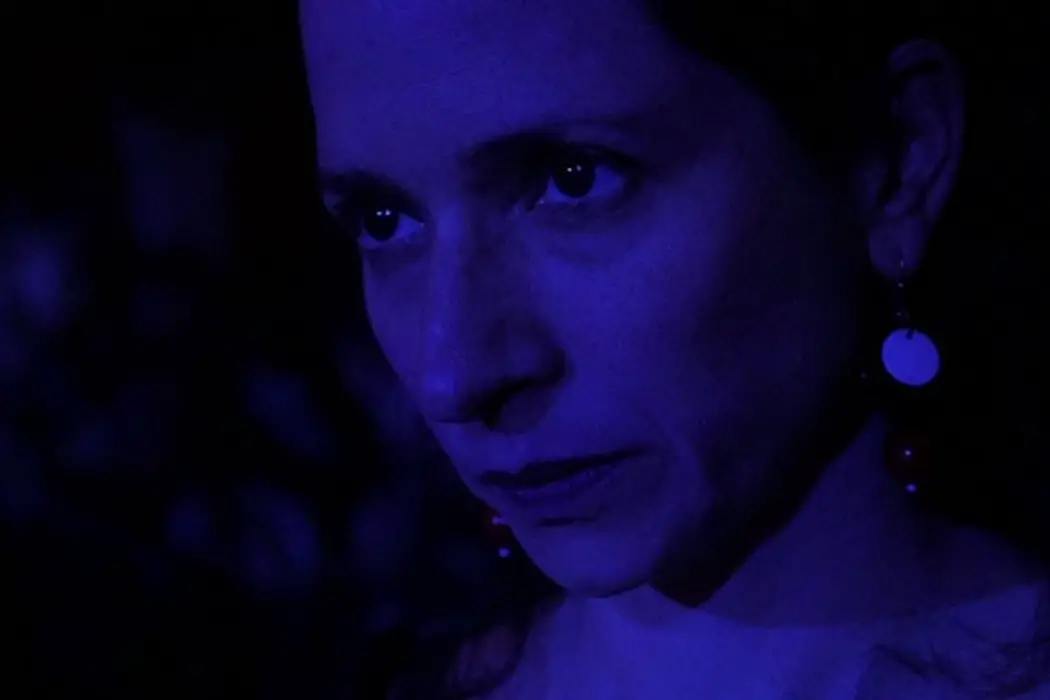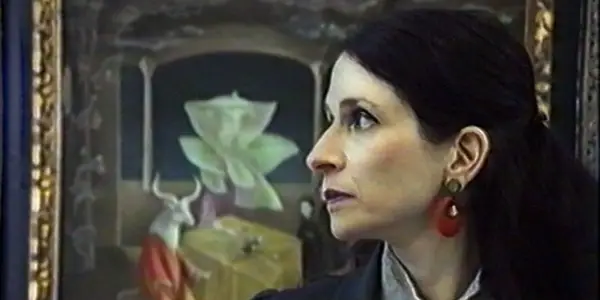FEMALE HUMAN ANIMAL: A Genre Defying, Immersive Psycho-Thriller

Becky spends her days working in TV and she spends…
Josh Appignanesi’s new feature film is an impressive blend of fact and fiction which successfully evades our preconceived ideas about genre to present itself as something radically bold, new and different. Shot for a minimal budget and featuring curator and author Chloe Aridjis, Female Human Animal explores female sexuality, violence and relationships through the art of surrealist painter, Leonora Carrington.
The combination of real life and scripted action cannot be defined with any kind of solid edge – Female Human Animal begins as Aridjis is putting the final touches to a retrospective show on the art of Leonora Carrington at the Tate. Poised as a dark thriller, Aridjis is dedicated to her work but is unsatisfied with her life. She longs for a relationship with someone, but when the opportunity presents itself, Aridjis realises that not every wish is fulfilled in the way one expects.
The Art, The Artist and The Curator
Part documentary (Chloe Aridjis, in real life, is an author and art curator and her curated Leonora Carrington exhibition really took place) and part fiction, the narrative is relatively simple even if the film’s format and symbolism is not. Aridjis meets a mysterious stranger whilst working late one night at the gallery. She is followed (or believes she is) for the next few days, eventually meeting and connecting with this strange man who is not everything Aridjis expects him to be. Or perhaps he is – depending on what the subjective expectations one adheres to. In line with Carrington’s commentary (various interviews with the artist are scattered throughout the film), the events depicted in Female Human Animal may be completely inline with the history of male violence against female bodies.

It’s impossible to talk about Female Human Animal without delving into the art and philosophies of Leonora Carrington. Originally born in the UK, Carrington spent much of her life in Mexico and devoted herself to surrealist painting. Most of her work was undiscovered outside of Mexico until fairly recently, and was one of the last surviving surrealist art movements of the 1930’s until her death in 2011. Perhaps as important – Carrington was also an instrumental figure within the Women’s Liberation Movement of Mexico in the 1970’s, and much of her feminist philosophy crossed over with her artistic work.
Carrington’s work and ethics are discussed by Aridjis in Appignanesi’s film as she is curating the exhibition of Carrington’s work. The initial introduction to Aridjis is essentially through Carrington’s work in the gallery, symbolically tying the two of them together from the very beginning of the film.
An Unconventional Thriller
Appignanesi could have moulded Female Human Animal as a typical thriller – the odd encounter, stalking and burgeoning love story-gone-wrong are all elements of a generic thriller film. Yet Appignanesi refuses to comply with the conventions of cinema. Aridjis and the man are often shot as though they are not even in the same room – heads are cut out of the frame, bodies are framed off centre and often characters are shot from an extreme distance or through refracted glass. The sense is that we are watching something real taking place – an observed truth rather than a fictional story. The characters are not quite as accessible to us in the way we would like them to be.

The choice to shoot on video tape (VHS), as opposed to film or on a conventional digital camera, contributes to this idea of authentic observation. The camera feels like an unobtrusive observer, something that just happens to be there rather than a purposeful decision to film this action. To begin with, the film feels like a more straight forward documentary – Aridjis is filmed preparing the gallery, at a book talk with friend Juliet Jacques, or awkwardly networking at a artists event. As a narrative begins to form, the sense of fiction becomes prevalent – suddenly Female Human Animal becomes a story and the lines between Aridjis as a real person and the dramatic narrative become completely blurred.
Andy Cooke‘s score adds another level of tension to what we see on screen. Deeply mysterious, it compliments and juxtaposes the action on screen all at once. Again, Appignanesi could have taken a more traditional route, but the jarring result is actually far creepier than any alternative.
Conclusion: Female Human Animal
The confusion of fact and fiction is part of the allure of Female Human Animal – there is a certain desperation to know whether this is a real or not. How much is real? We, as audiences, are so used to having films fed to us in very rigid genres and Female Human Animal rejects these completely. Female Human Animal is a unique experiment into pushing the boundaries of what is considered to be fact or fiction. It’s stilted pacing and subversive aesthetic will not be for everyone, but it has gone straight to the top of my favourites for 2019, already.
What did you think of Female Human Animal? Are there other films you think blur the boundaries of genres and formats so effectively?
Female Human Animal is now available on VOD.
Does content like this matter to you?
Become a Member and support film journalism. Unlock access to all of Film Inquiry`s great articles. Join a community of like-minded readers who are passionate about cinema - get access to our private members Network, give back to independent filmmakers, and more.
Becky spends her days working in TV and she spends every other minute writing about cinema, TV & feminism. Based in London, she also likes drinking gin, re-watching 'The X Files' and writing about on-screen representation and all manner of things over at femphile.com













